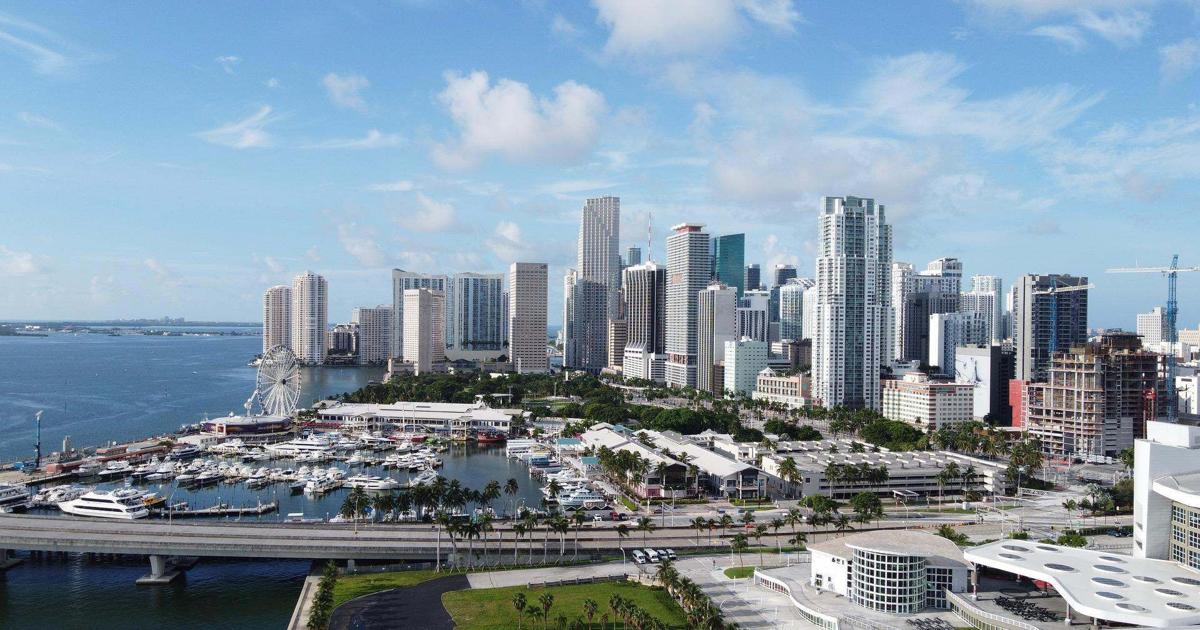Why Miami’s Commercial Real Estate Market is Prospering in Challenging Times – Commercial Observer
As leaders of a team that has executed over $16 billion in commercial real estate sales, Avison Young’s Chairman of U.S. Capital Markets Executive Committee, Principal and Managing Director-Miami Michael Fay and Principal John Crotty understand market factors as well as anyone in the business. During a recent conversation with Commercial Observer Executive Director Robyn Reiss at Commercial Observer’s South Florida Leadership Reception, the pair expressed the view that despite prevalent economic obstacles, South Florida’s CRE market is booming, and that boom should be expected to continue.
“I fully believe that we’re going to see great continued growth,” said Fay, Avison Young’s chairman. “We have a great migration of people and great companies still coming in, along with a lot of new and renewed capital coming here from all over the globe.”
Fay noted that South Florida’s current strength transcended asset class.
“Office around the country is experiencing issues, but Miami and South Florida’s continued rent growth and minimal vacancies really prove the area’s strength,” he said. “We have some of the newest office buildings being built right now, which proves the strength of our market.”
Crotty, a principal at Avison Young, discussed the status of asset classes in South Florida.
“Multifamily and industrial continue to be incredibly strong,” said Crotty. “We’re seeing values really hold there, if not rise. There’s just such a lack of supply of those opportunities on the market, and the demand continues to be really strong. I think opportunities will continue to be seen on the development side.”
Crotty noted that he’s seeing abundant capital flowing into the region for residential and mixed-use development, and Fay expanded on this by describing the area’s strong demand for new land use and construction.
“We’re seeing this across the South Florida market,” said Fay. “When developers come in from a global standpoint, which we’re seeing, they have a different view than groups that have been down here already. These developers are bringing a lot of new insight and ideas into thoughtful development.”
Reiss delved deeper into the reasons for Miami’s current prosperity, asking how the area’s global appeal has provided the market with a competitive edge.
“The thing that really resonates with me, and what I’m seeing from folks coming in, is the tax benefits,” said Crotty. “Florida having no state income tax is an incredible incentive. Then there’s the pro-business environment we have here, from both a local and also a statewide perspective. We’re seeing groups from Chicago, New York, even the West Coast and California relocating here, and when they see the quality of life, the sunshine 12 months a year, in addition to the benefits I just mentioned, it sells itself.”
Fay added a word of appreciation for Miami Mayor Francis Suarez, who he said has been “phenomenal” in pushing an agenda of success for the region.
To sum up, Fay said that when you add up all the advantages the South Florida region provides today, it’s hard to feel anything but optimistic about the area’s potential for further growth.
“We look at all these progressive companies coming down here in addition to private equity firms and other financially related firms, and we’re seeing a real convergence here in South Florida,” said Fay. “And yes, we have low taxes, and sun and sand have always been fun. But when you start to look at where we’re located, with Miami being within three hours of 30 different countries; that we’re in a great time zone, which is still the financial time zone everybody adheres to; and even the quality of our athletic teams, with the Panthers and the Heat, it all just creates a lot of fun.”


